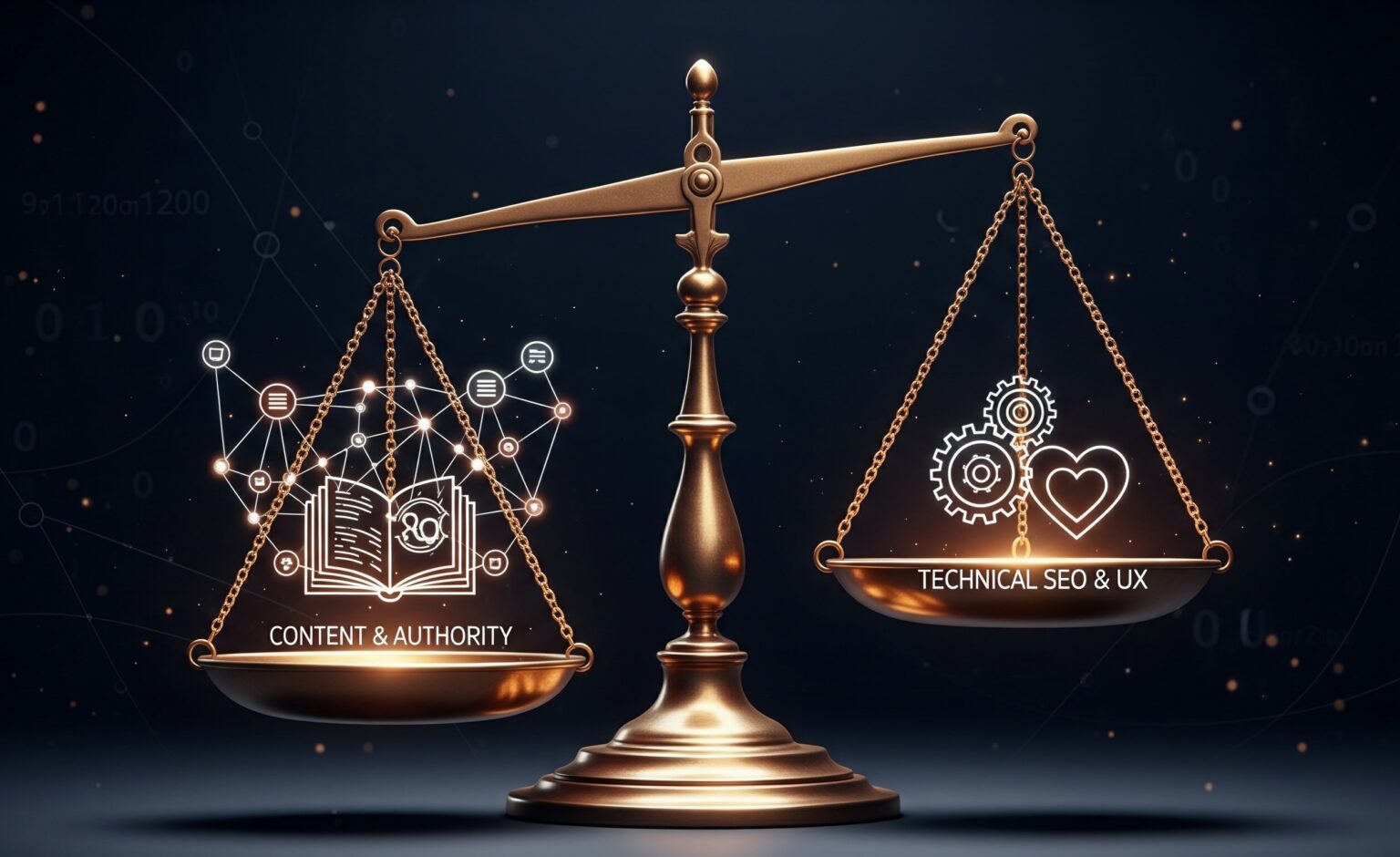Many people view SEO as a collection of secret tricks or a simple checklist. But to achieve stable, high rankings, you need to understand not just what to do, but how Google thinks. Google's algorithm isn't a list of hundreds of factors; it's a complex system that tries to evaluate websites the way a human would: by looking for the most helpful, authoritative, and user-friendly answer to a question.
The goal of this guide isn't just to list factors but to give you a mental model. I’ve grouped all the key signals into three main pillars: Content Quality & Relevance, Authority & Trust, and Technical Excellence & UX. By understanding the logic behind each, you'll be able to make the right decisions to grow your site.
Content Quality & Relevance
This is the foundation of your success. If your content doesn't answer the user's query better than anyone else, all other efforts are wasted.
Search Intent
Before writing a single word, ask yourself: what is the user really looking for?
- Informational Intent (“Know”): The user wants information (e.g.,
"how to choose a mountain bike"). - Transactional Intent (“Do”): The user is ready to make a purchase or take action (e.g.,
"buy Trek Marlin 5"). - Navigational Intent (“Go”): The user is looking for a specific website (e.g.,
"Trek bikes official site").
Actionable Takeaway: Your page must be a 100% match for the dominant intent of the query. If the top results are all e-commerce product pages, your informational blog post won't rank there, and vice versa.
Depth and Semantic Completeness
Google stopped matching keywords years ago. It now understands entities (people, places, concepts) and the relationships between them.
- What this means: Instead of repeating the phrase “mountain bike” 10 times, an expert article should cover related entities: “full-suspension vs. hardtail”, “Shimano components”, “cross-country trails”, “frame geometry”, “29er vs 27.5 wheels”.
- Why this works: By covering a topic from all relevant angles, you create a semantically complete document. To Google, this signals that your page is the most comprehensive resource for that query. This is why long-form, in-depth guides often outperform short, superficial posts.
E-E-A-T: Experience, Expertise, Authoritativeness, and Trustworthiness
E-E-A-T is not a direct ranking factor but a framework from Google's Search Quality Rater Guidelines. It's especially critical for “Your Money or Your Life” (YMYL) topics like finance and health.
- Experience: (The newest signal!) Google wants to see firsthand, real-world experience. Did the author actually use the product? Do original photos and videos support the review?
- Expertise: Is the content written by a subject matter expert?
- Authoritativeness: Is your site recognized as a go-to source in your niche? Do other authoritative sites link to and mention you?
- Trustworthiness: Is your site secure (HTTPS)? Is it easy to find contact information and who is responsible for the content?
Authority & Trust
Google trusts sites that other sites trust. This authority is primarily measured through external signals.
Backlinks
Links remain one of the most powerful ranking factors. But not all links are created equal.
- Authority of the Linking Domain: One link from a major publication like The New York Times is worth more than thousands of links from unknown blogs.
- Topical Relevance: A link from a cycling magazine to your bike shop is far more valuable than a link from a cooking blog.
- Context and Anchor Text: A link organically placed within a relevant paragraph with the anchor text “Trek mountain bike review” passes much more powerful signals than a generic “click here.”
Brand Signals
Beyond direct links, Google also considers your overall brand recognition.
- Branded Search: How many people are searching directly for your brand name (e.g., “Wirecutter,” “Zappos”)? An increase in branded search is a powerful trust signal.
- Unlinked Mentions: Even when your brand is mentioned on an authoritative site without a link, it can be seen as a signal of authority.
Technical Excellence & User Experience (UX)
You can have the best content and links, but if your site is slow and frustrating to use, you won't rank at the top.
Core Web Vitals: A Health Check for Your Site
These are three specific metrics that measure the real-world user experience of a page.
- LCP (Largest Contentful Paint) – Loading Speed: How fast does the largest element (usually an image or text block) appear on the screen? Goal: Under 2.5 seconds.
- How to Fix: Optimize images (use WebP/AVIF), use a fast web host and a CDN, and defer non-critical CSS and JavaScript.
- INP (Interaction to Next Paint) – Responsiveness: How quickly does the page respond to user interaction (like a click or tap)? This new metric replaced FID. Goal: Under 200 milliseconds.
- How to Fix: Break up long-running JavaScript tasks, reduce the complexity of your page, and optimize third-party scripts.
- CLS (Cumulative Layout Shift) – Visual Stability: Does the layout “jump around” as the page loads (e.g., due to ads or fonts loading in)? Goal: A score under 0.1.
- How to Fix: Always specify dimensions (width and height) for images and video elements, and reserve space for ad slots.
You can monitor these metrics in your Google Search Console under the “Core Web Vitals” report.
Mobile-Friendliness
Google uses mobile-first indexing, which means it primarily uses the mobile version of your site for ranking and indexing. If your site is not optimized for mobile, you're fighting a losing battle. A responsive design, readable text, and easily tappable buttons are non-negotiable.
Security (HTTPS)
Having an SSL certificate (so your site URL begins with https://) is a foundational trust factor. Browsers flag non-HTTPS sites as “not secure,” which deters users and is a negative signal to Google.
How It All Works Together
It's critical to understand there is no simple formula like (Content * 0.4) + (Links * 0.3) + (Tech * 0.3) = #1 Rank.
These pillars work in synergy.
- Great content naturally attracts backlinks.
- Excellent technical SEO ensures that Google can easily crawl and appreciate the value of both your content and the authority passed by your links.
Your job isn't to find a single “secret” factor but to build a holistic strategy that addresses all three areas. Start by creating the best answer to your user's query, get recognized by authoritative sources, and ensure your site is a fast, seamless experience. That is the essence of modern SEO.













